The COVID-19 pandemic has changed the way people shop. Not only is the e-commerce industry and online shopping experiencing rapid growth, but the consumer behavior behind this trend is predicted to persist even when things return to “normal” again.
While consumers will return to some of their more retail-friendly shopping habits once the pandemic is no longer a threat, many consumers will still rely on Amazon and online shopping to fulfill many of their needs. According to a McKinsey & Company 2020 Survey, 50 percent of consumers are planning to continue some of their recently gained online shopping habits post-pandemic.
For private brands and labels, this means having to adopt a business model centered around omnichannel sales and marketing, with a heavier focus on e-commerce. The success – or failure – of private brands will be dependent on their ability to:
- Provide value during the online shopping experience
- Package products in a manner that’s attractive for online viewing
- Comply with Amazon regulations and shipping requirements
- Integrate retail and e-commerce into a single shopping experience
How Private Brands are Positioned for Long-Term Success
Over the course of 2020, private brands were able to secure a greater portion of market shares than they had in the past. This was primarily due to retailers’ reliance on private brands in the earlier days of the pandemic when larger labels were facing severe uncertainty.
In addition to retailers relying more on private labels, consumers also showed their preferences by having increasing brand loyalty for private labels. The pandemic was a shock to loyalty for many, and consumers were forced to examine their purchasing habits. One example where private labels benefited from this shock to loyalty was the product shortages that were apparent with the onset of COVID. Major labels could not meet the demands of their consumers, so many people opted for products from more readily available private brands.
The Power of Brand and Supplier Collaboration
Even though we can predict consumer habits, one thing is certain – you can’t plan for everything. That is why being able to stay nimble and agile is one of the most important things that all labels and brands can do.
The key to staying agile is to have solid collaboration between brands and suppliers. Private brands must engage with their suppliers and actively support them, thus allowing both brands and suppliers to achieve more together.
Engaging suppliers is centered around two main areas: tactical engagement and cultural engagement. Having this two-pronged approach to supplier engagement will help ensure that your supplier relationship can withstand whatever new challenges come up.
On the tactical side, the three main pillars of supplier engagement are:
- Communication
- Transparency
- Support
From a cultural perspective, your goal is to work with your suppliers as a single unified team. Through collaboration and accessibility, coming together to address issues should be as simple as if you were working with your own internal team.
The Increasing Role of Packaging
No matter if you are engaging in online or brick-and-mortar shopping, how a product is packaged can mean the difference between a sale and a missed customer. Packaging serves both as the final step of a product’s marketing, as well as the vehicle for your product to make it into the hands of the consumer. As such, a product’s packaging should:
- Entice and engage the consumer
- Easily convey the message of the brand/product
- Protect across all stages of distribution
Here is what to focus on when it comes to packaging to ensure that your product doesn’t just get into the hands of your customer, but that it keeps them happy and coming back for more:
Packaging That’s Good for Shipping and the Environment
When a customer orders a product online, it may be handled 30+ times before it arrives on their doorstep. Air shipments with extreme altitude changes can also cause products to expand or contract, potentially distorting the package and damaging your product. That is why the durability of your packaging is key to help prevent product loss.
However, you also want to keep your product as light as possible as to not incur unnecessary additional shipping costs. Minimal packaging also helps to support product sustainability, which is both an economic and marketing benefit. More and more consumers are challenging brands to become more sustainable, and many of your customers are already factoring environmental sustainability into their purchasing decisions.
User Convenience
If you’ve ever had to search your house upside down for a pair of scissors just to open a product, then you know the pain on packaging that isn’t user-friendly. It’s simple – consumers want products that are easy to open. Even though you already made a sale, if the packaging makes your product difficult to open, consumers are likely to remember that and try a different product the next time they’re in the market.
Connecting with the Consumer: What Does Your Brand Mean?
A product’s packaging is a perfect place to highlight your brand and showcase your label’s identity. This goes beyond just visually stimulating designs and eye-catching colors – your packaging should showcase your brand’s mission. Whether your packaging is made from recycled plastics or you donate X of your sales to charity, make sure that message – the “why” of your product – is clear on your item’s packaging.
MRP Solutions: Helping Private Brands Optimize Their Packaging
Here at MRP Solutions, we work with brands of all sizes to improve their packaging. Our packaging experts help ensure that your product is both safe and marketable for the long-term success of your brand.
If you’d like to learn more about how to secure your private label’s success in these uncertain times, check out the Store Brand’s recent webinar “COVID-19. What Comes Next?” Sponsored by MRP, this webinar features a panel of industry experts as they define how the pandemic has impacted consumer behavior, and how private brands can capitalize on these changes.


